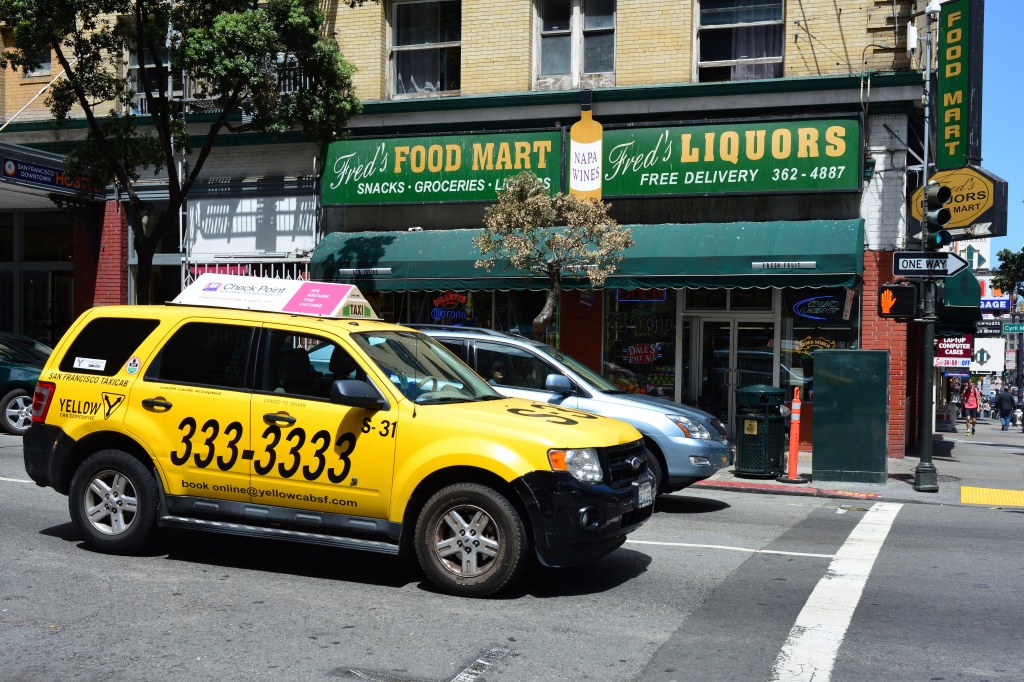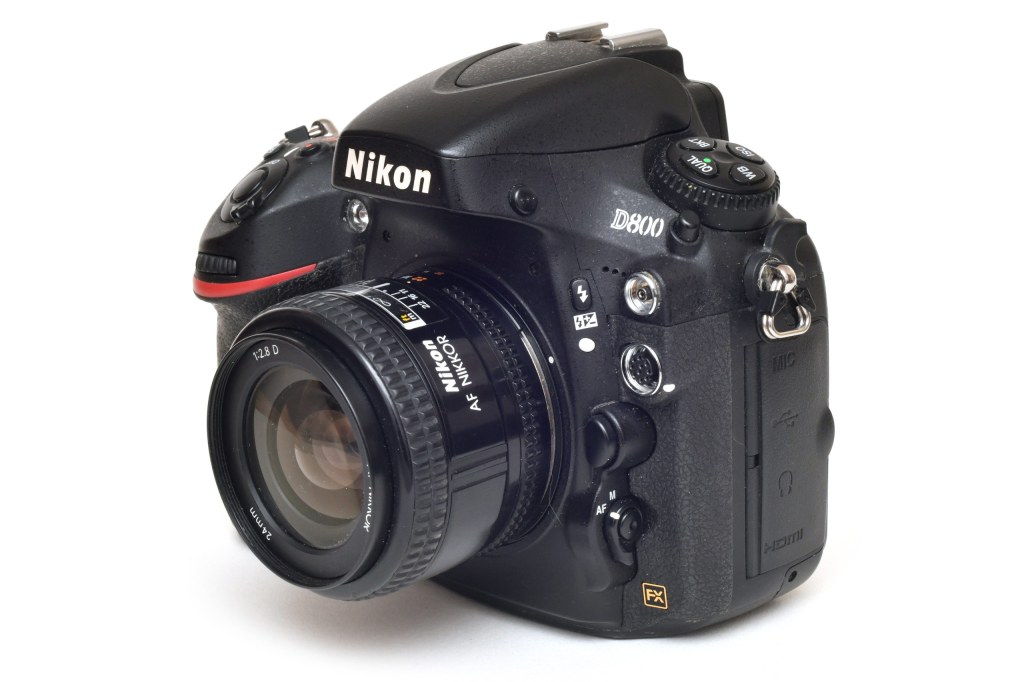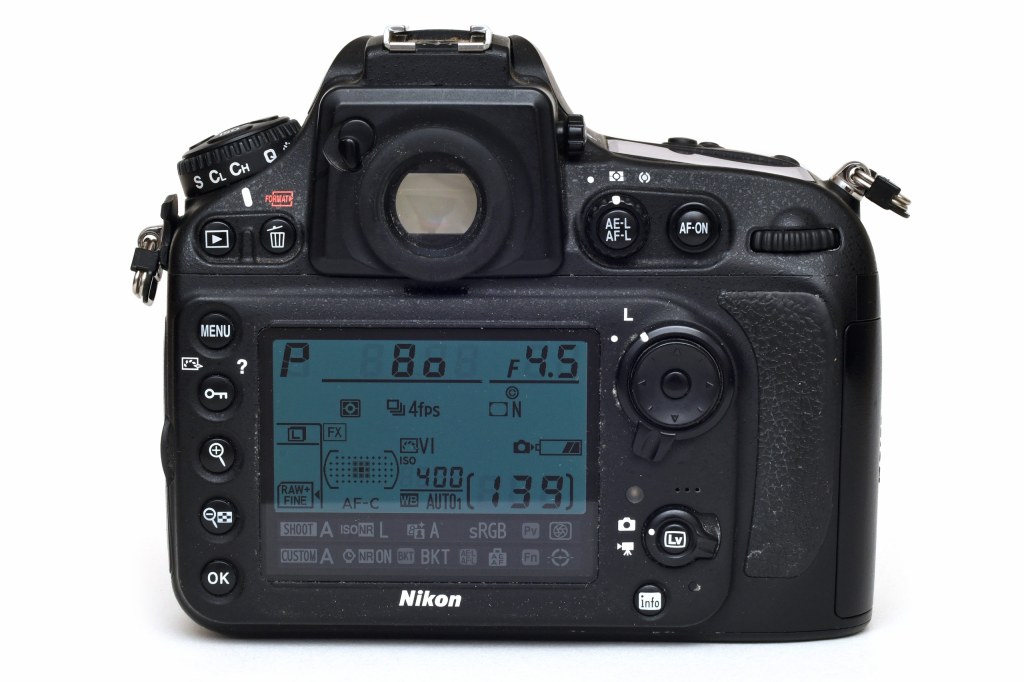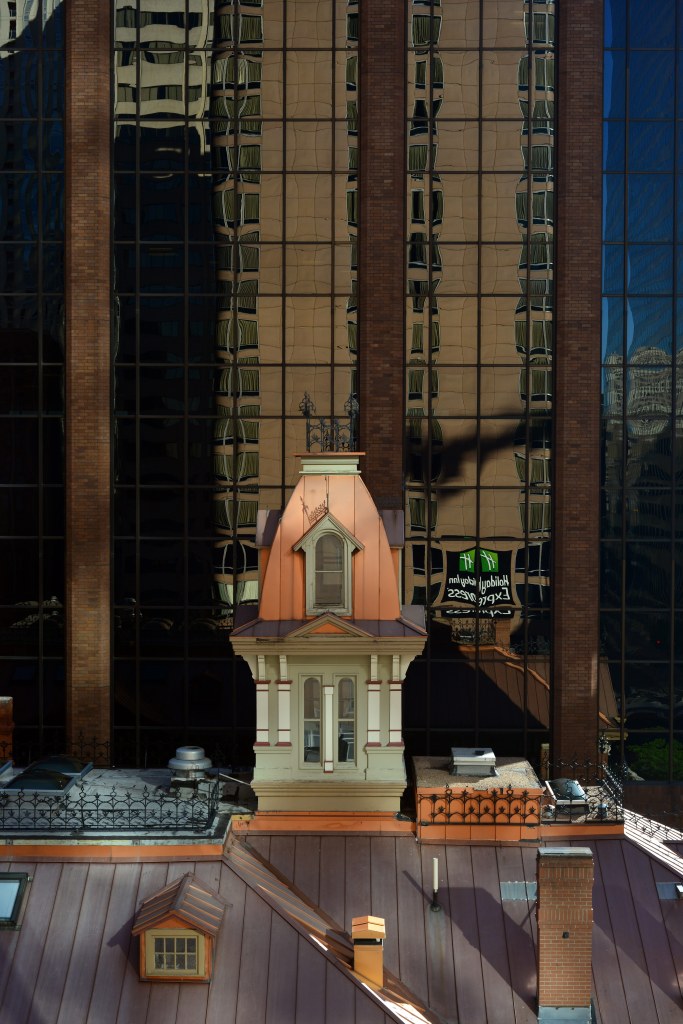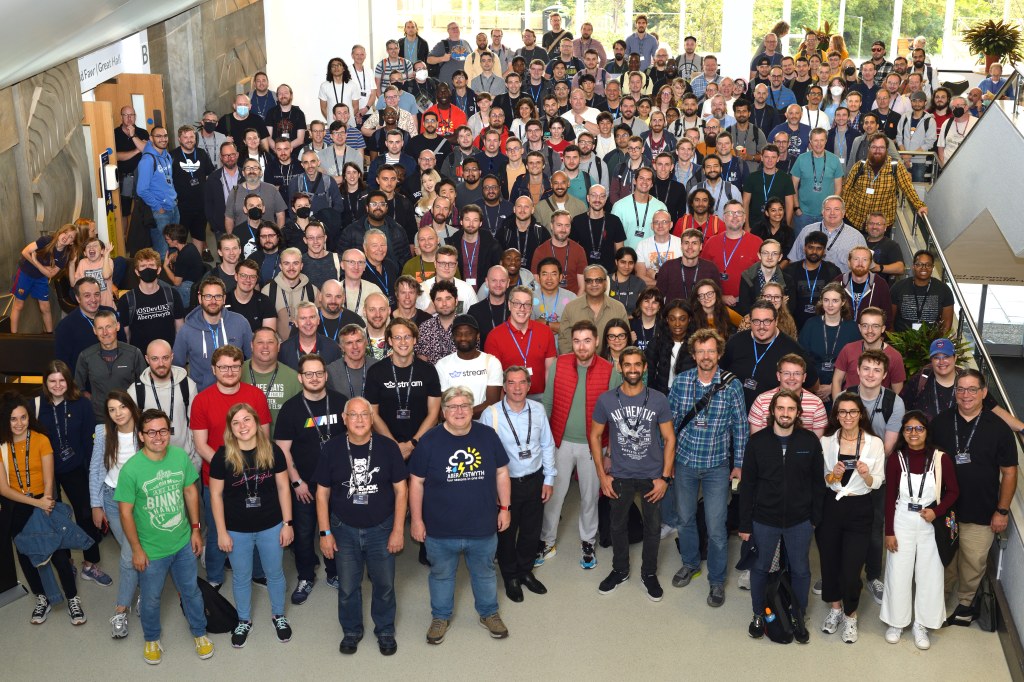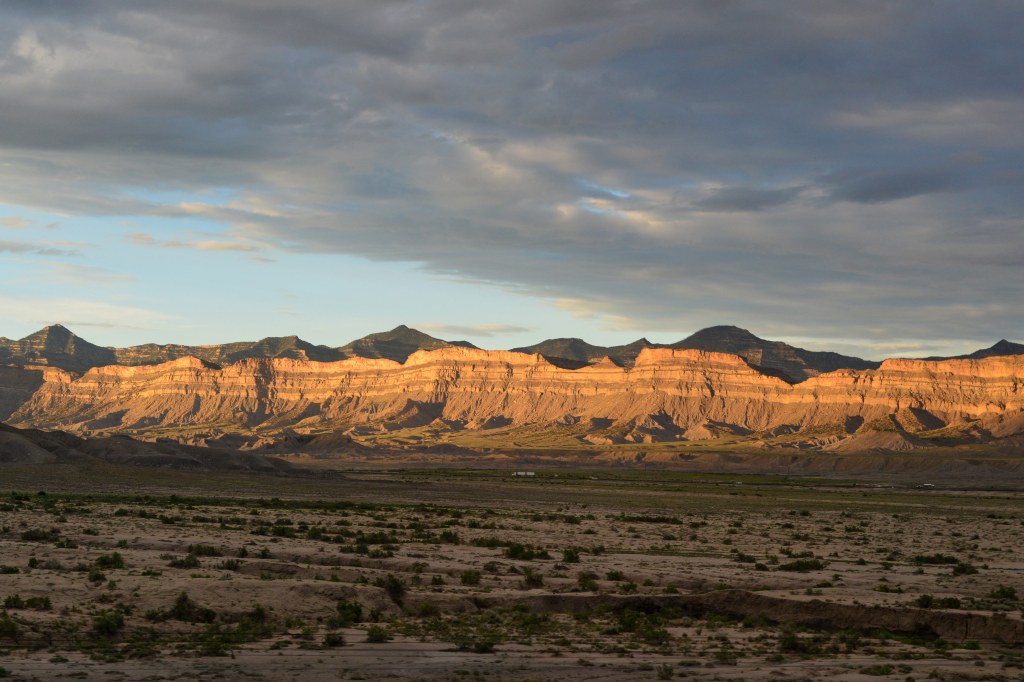Launched in 2012, the Nikon D800 arrived with a spectacular specification including a 36MP sensor. Today’s best Nikon mirrorless cameras boast more than 40MP sensors, but the D800 may still be able to meet the challenge, even after 10 years.
Nikon D800 – At a glance:
- Launch price £2599, secondhand price approx £450-650
- Nikon F-mount DSLR
- 36.3MP full-frame sensor
- Supports a very wide range of Nikkor lenses from AI onwards
- Excellent image quality, with good out-of-camera JPGs
- Versatile, all-round performer
It was the spring of 2015, and I desperately needed a new DSLR body. The Nikon D300 I’d been using since 2008, with only a 12MP sensor, was beginning to look a bit anaemic and I’d had an invitation to a writer’s workshop in Laramie, Wyoming. While I understand that size isn’t everything, I needed a camera that would be capable of helping to fund the trip – which I wanted to extend into a three week odyssey across the American West, ending up at some old haunts in San Francisco.
The Nikon D800 had been launched in 2012, nearly three years before, and while a new one was still out of my reach, second-hand prices were beginning to become affordable. After a lengthy search, I picked up a low-mileage D800 for around £1100 – and it quickly proved itself to be a great companion.
After a month of familiarisation, which scarily involved a couple of weddings, I packed my new friend up with a careful selection of Nikkor prime lenses and headed off to the United States. We have been together ever since.
Nikon D800 – Design and Handling:
As a classic example of the Nikon DSLR, the format and layout of the D800 will be immediately familiar to most Nikon users. Despite having been around for over a decade, few things about the design are showing their age, except for minor details. The 36.3MP sensor provides images up to 7360 x 4912 pixels, giving the photographer plenty of space, while the core sensitivity runs from ISO 100 to ISO 6400 – and the image quality is exceptional at the lower end of the range. The autofocus system is based on TTL phase detection and offers 51 focus points.
Typically for Nikon’s semi-professional range of DSLRs, the build quality is of a very high standard, being based around a magnesium alloy body shell. This gives the D800 a weight of around a kilo when fitted with an EN-EL15 battery, but no lens. This is a good deal more than a consumer level DX DSLR body, but the resulting body is extremely robust and has a reassuring degree of heft. The same battery is used in the D850 and several of the Z series mirrorless cameras, so it should remain available for a good while to come.
In terms of media, there are two memory card slots. One is a UHS-1 compliant SD (Secure Digital) card slot, which accepts both SDHC and SDXC variants. I use this with 64 GB SanDisk cards, the largest recommended by Nikon. The other slot is for Type 1 CompactFlash cards, which is probably of limited value to most folk today.
The viewfinder is big and bright, and has a fixed type-B matte screen that gives 100% coverage of the frame. This is a real boon for detailed work, especially technical and architectural projects where you absolutely need to squeeze the last pixels out of the frame – and a selectable framing grid also helps with this. It would have been nice to have interchangeable screens, but it seems that those days have past. The viewfinder carries the usual range of information displays, which are crisp and clear, and it has a mechanical blind to keep extraneous light from confusing the exposure meter when used on a tripod.
The rear monitor is a standard 3-inch LCD screen with a good viewing angle, and it is fixed, rather than articulated. While there are a few times I would have preferred not to lie face-down in the mud to secure a macro shot of a plant, I generally like screens that don’t move on the basis that if it’s got a hinge, it’s vulnerable to breakage. Also, the monitor is not a touchscreen, which may catch out a few modern folk when they first start to use the D800.
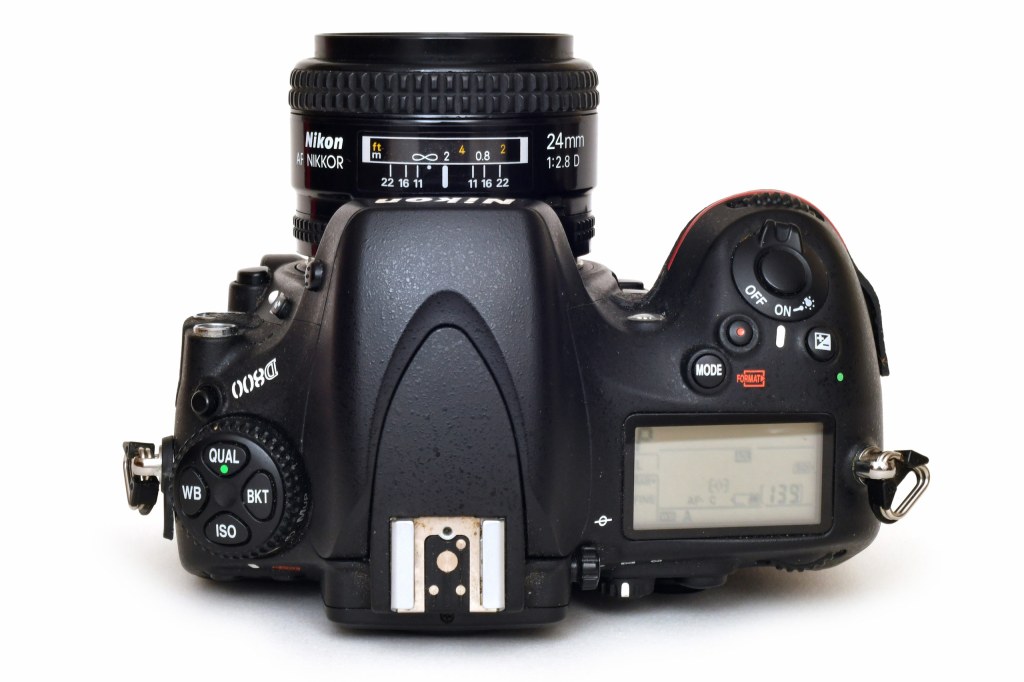
Nikon D800 top view, fitted with the AF 24mm f/2.8D lens. Image: John Gilbey
Unusually for a DSLR in this class, the D800 includes a small pop-up flash in the viewfinder housing. While not hugely powerful, this is useful to add some highlights and fill-in for snatched shots in poor light. More importantly, it can act as the “master” flash in Commander mode, allowing you to wirelessly trigger a set of compatible Nikon flash units.
The lens mount is metal and is very sturdy, giving a sense of confidence when attaching a kilogram of camera to a long, heavy lens. Behind this and the mirror, the vertical-run focal plane shutter is timed to offer exposures from 30 seconds to 1/8000th – plus B (Brief Time). Flash sync is at 1/250th sec.
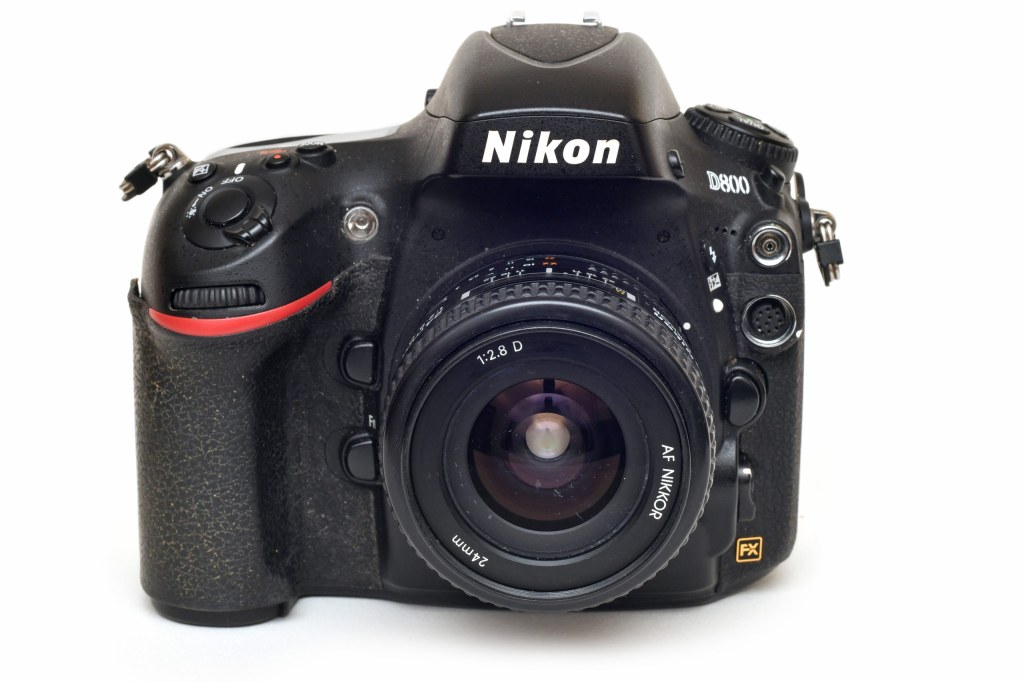
Nikon D800 front view, fitted with the AF 24mm f/2.8D lens. Image: John Gilbey
In a welcome move, the layout of controls on the D800 is unremarkable, in that everything is where it ought to be and falls easily under the fingers. The now traditional front and rear command dials are positive in operation, even while wearing gloves, while the buttons and latches work only when asked, not accidentally. In this classic Nikon offering the metering mode is selected by a switch, which makes it much easier to remember what is going on than if it was buried in a menu.
Nikon D800 – Flexibility:
The Nikon D800 benefits from being near the top of a very large pyramid of development. The Nikon F mount has been a fixture of SLRs since 1959, and the D800 can accept almost every lens in this fitting, apart from a few early exotic fisheyes (which needed mirror lock-up) and other specials. Manual AI and AIS lenses will meter successfully in aperture priority mode and the focus confirmation indicators will work fine.
There is also built-in compatibility with Nikkor D-series autofocus lenses, which lack an internal focusing motor. These are driven by a mechanical linkage from a motor built into the camera’s body, and this operates rapidly and precisely. Naturally, modern Nikkor AF-S lenses are fully supported. What this means in practice is that I can still use the excellent quality Nikkor prime lenses that I bought for my Nikon F3 and F5, all of which are beautifully made, and many stand comparison with their modern incarnations.
The same flexibility extends to accessories, as the D800 embraces the Nikon 10-pin terminal on the front panel. This allows remote triggers, a GPS and other useful gizmos to be mounted securely – a boon for those who find wireless devices less than dependable. One accessory you won’t need to connect is an intervalometer for time-lapse work, as there is a very effective one built in.
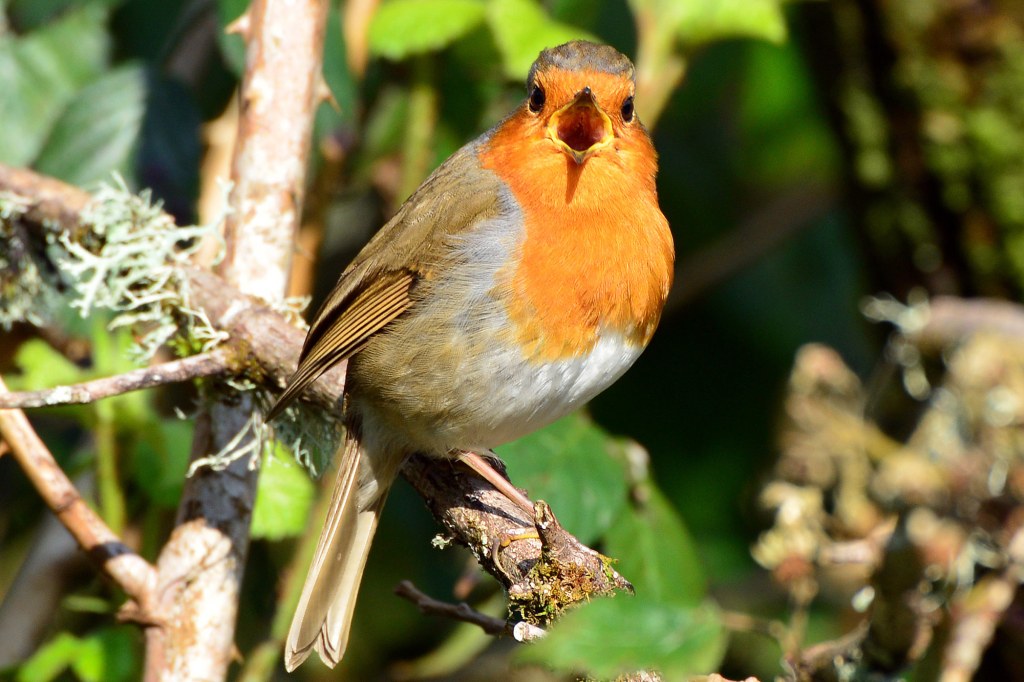
A robin sings on a branch, surrounded by green leaves. Image: John Gilbey
Flash too is well provided for, with the Nikon Creative Lighting System doing a very effective job, especially when balancing complex lighting arrangements and providing natural looking fill in. If you want to go “old school” there is even an ISO standard coaxial (PC) connector available.
Nikon D800 – In the Field:
In my view, the test of any camera is how much you trust it across a range of applications. When it was released in 2012, there was some talk regarding what the intended target was for the D800. With its impressive 36.3MP resolution, was it geared towards wedding and studio work, as it was approaching the scope of a medium format camera? Would landscape photographers embrace it because of the high level of detail and low native ISO sensitivity? Is it too big and heavy to be a travel camera? Would it be fast enough for sports and wildlife use? In short, was it trying to be too many things? Let’s look at some of these use cases in more detail.
For large groups such as weddings and conference photographs, the 36 MP sensor of the D800 is a massive benefit. When used at 100 or 200 ISO, it delivers a remarkable level of detail, even a decade after it was introduced. Very large enlargements – think banner sized – are possible without over-straining the pixels. The “Standard” setting of colour rendering provides a very good baseline which enables you to offer high quality JPG images more-or-less straight from the camera, with a minimum of intervention during the workflow.
Individual portraits are equally impressive, especially if you add a short telephoto lens such as the AF-D 85mm f/1.8. The high resolution gives the impression of working with medium format, but at a fraction of the price and in a very convenient package. One portrait I snatched using window light in a shady London pub ended up being used as the author portrait for an award-winning science book. So it is a real “go anywhere, do anything” companion.

Portrait of science writer Dr Henry Gee. Image: John Gilbey
Landscapes shot with the D800 can be rather splendid if, as always, you invest the time in preparation. For fans of saturated colour, the “Vivid” setting in colour management gives a landscape effect not unlike Fuji Velvia, with plenty of punch but no loss of detail, while the wide dynamic range really helps bring a scene to life. This also helps with post-processing if that is the path you wish to travel. For monochrome landscapes, shooting in colour at ISO 100 and then selectively filtering down can give a quality and apparent depth that I have rarely seen outside large format film photography. Just as with large format, the high resolution makes any failure of your technique extremely obvious – so choose your focus point with care, and if you need a tripod don’t hesitate to use one!
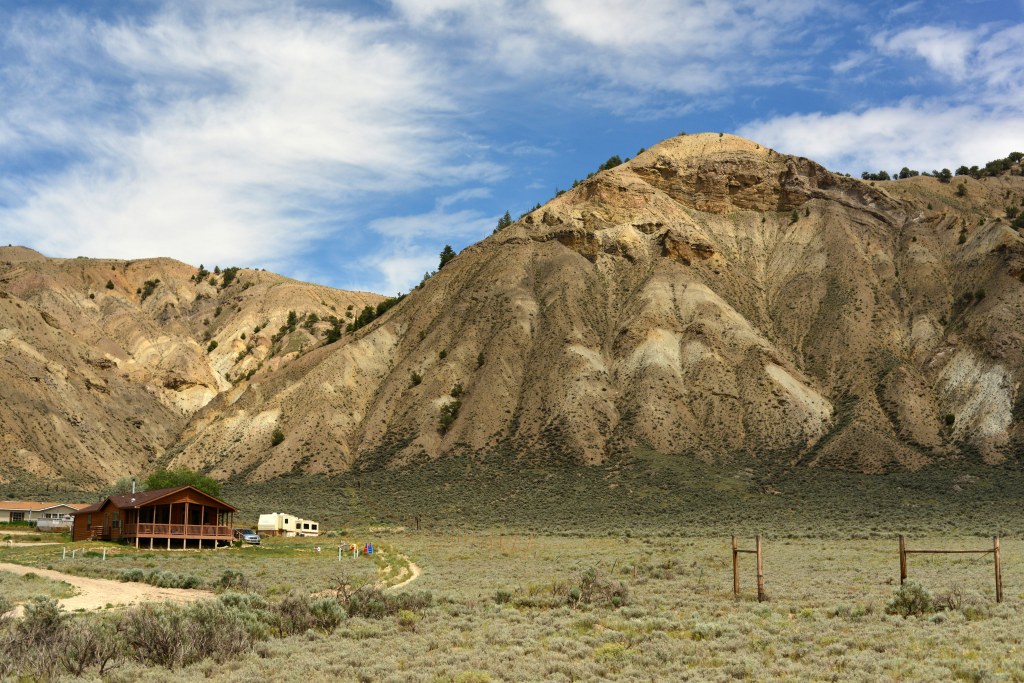
Houses and weathered hills ,Colorado. Image: John Gilbey
I didn’t expect the D800 to be especially agile when it came to things like capturing birds in flight – but I was pleasantly surprised. I have used it extensively for imaging red kites in the Cambrian Mountains and fast-moving wading birds flying over estuaries without the feeling that I was missing opportunities. The high-speed drive setting is “only” 4 frames a second, but this rises to around 6 when you add the optional MB-D12 battery pack, which has the added benefit of improving the balance of the camera when using a long telephoto lens.

Red Kite in the Cambrian Mountains. Image: John Gilbey
Having a top-quality camera to travel with was an important part of my reasoning when I chose the D800. After using Nikon SLRs since the days of the F3, I am happy to rely on them in pretty much any situation, and if the price for that is a little extra bulk and weight, that is something I am happy to accept. An important goal for my trip to the USA in 2015 was my personal project “Transect” – which I later wrote up as a feature article for “Geographical” magazine. Basically, it is a record of the train journey from Denver to San Francisco through the Rocky Mountains, then across Utah and the deserts of Nevada.

Union Station, Denver, Travel by Train sign. Image: John Gilbey
I chose to capture it with the D800 and a single 50mm Nikkor lens, showing the relationship between landscape and human impact across a wide range of environments. The 34-hour journey resulted in around 3000 images, and a host of memories. During this trip, the D800 was faced with a significant set of very challenging light conditions, yet consistently delivered accurately exposed, well focused and visually engaging images – something I would have really struggled to achieve with a more basic camera.
Nikon D800 – Verdict:
Even eleven years after it was launched, the Nikon D800 has a very respectable specification and gives exception image quality when used effectively. I have found it to be an excellent all-round professional camera which is reliable, flexible and supports the types of photography I do. The images the D800 is capable of capturing speak for themselves – and my (admittedly second-hand) body literally paid for itself on its first trip to America. Equally importantly, those images are still selling eight years later. If you are looking for a DSLR that can give professional images, and you are on a tight budget, the Nikon D800 has plenty of miles left in it.
Related reading:
- Nikon D850 review: still an all-round sensation
- A change of lens is as good as a rest
- The 12 best Nikon DSLR cameras ever
- Best Nikon mirrorless cameras to buy right now
Follow AP on Facebook, Twitter, Instagram, YouTube and TikTok.


